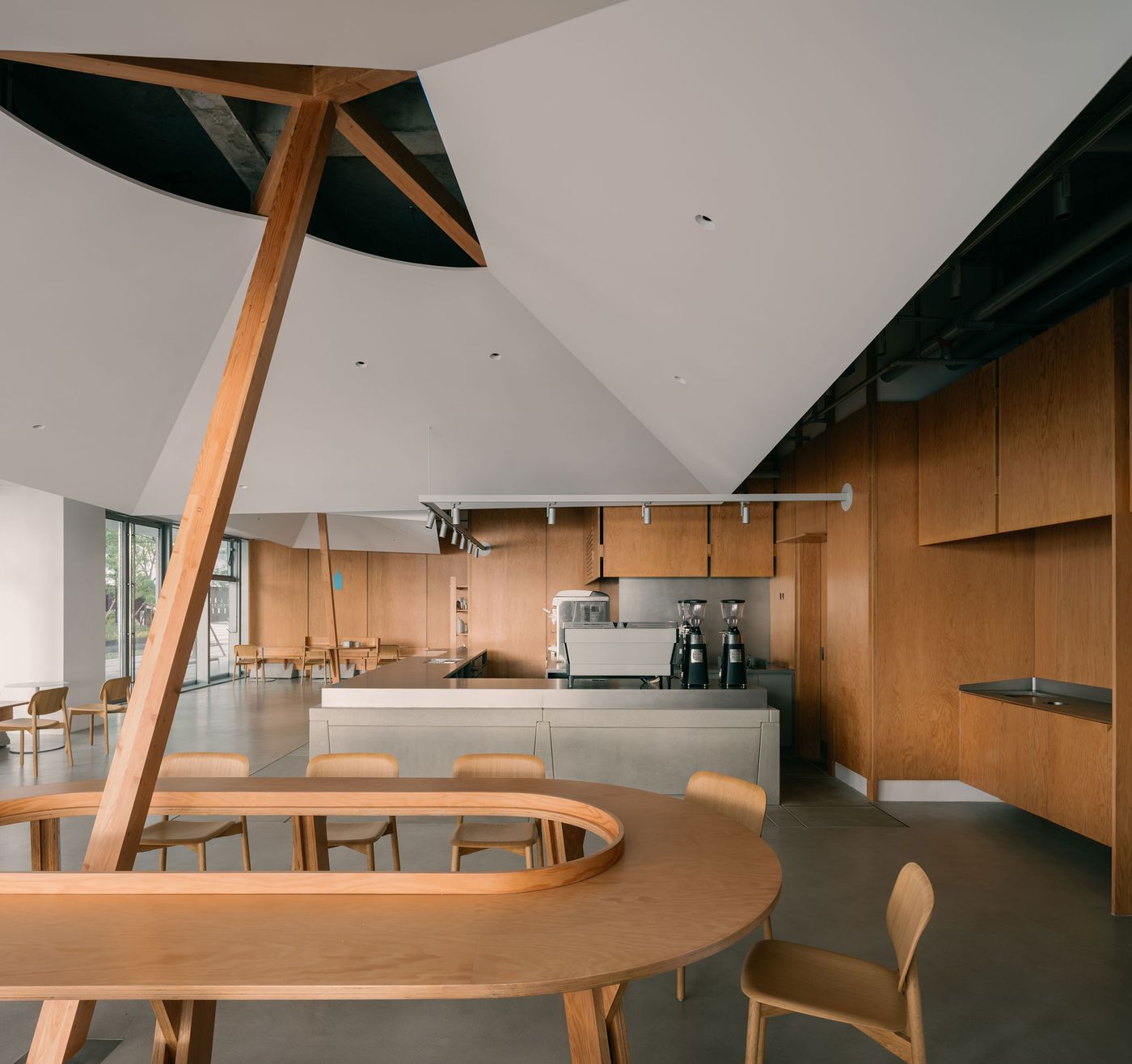
Atelier tao+c Channels Shanghai’s Industrial Past in Blue Bottle Coffee’s West Bund Outpost
Words by Yatzer
Location
Shanghai, China
Atelier tao+c Channels Shanghai’s Industrial Past in Blue Bottle Coffee’s West Bund Outpost
Words by Yatzer
Shanghai, China
Shanghai, China
Location
American speciality coffee roaster Blue Bottle Coffee’s latest café in Shanghai continues the brand’s thoughtful engagement with the city’s layered urban heritage. Much like its outpost in the Jing’an District, housed in a late 19th-century townhouse, the new location in West Bund by atelier tao+c bridges the past and present, this time within the footprint of a former industrial facility. Underpinned by the studio’s signature utilitarian ethos, a considered palette of humble materials, straightforward construction techniques, and finely crafted details, the café’s design distils the essence and life of the former site into a quietly powerful abstraction, honouring its context through form, tactility, and rhythm.
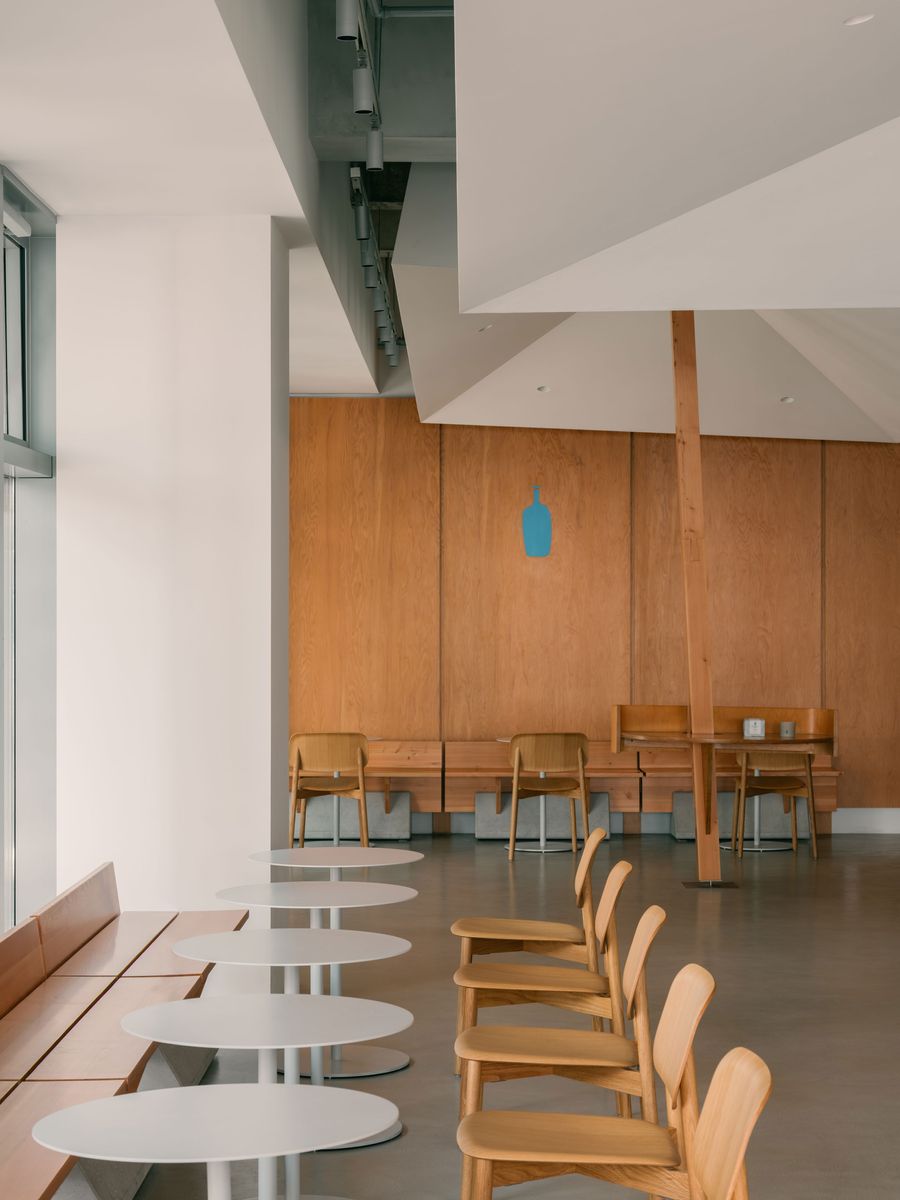
Photography by Wen Studio.

Photography by Wen Studio.
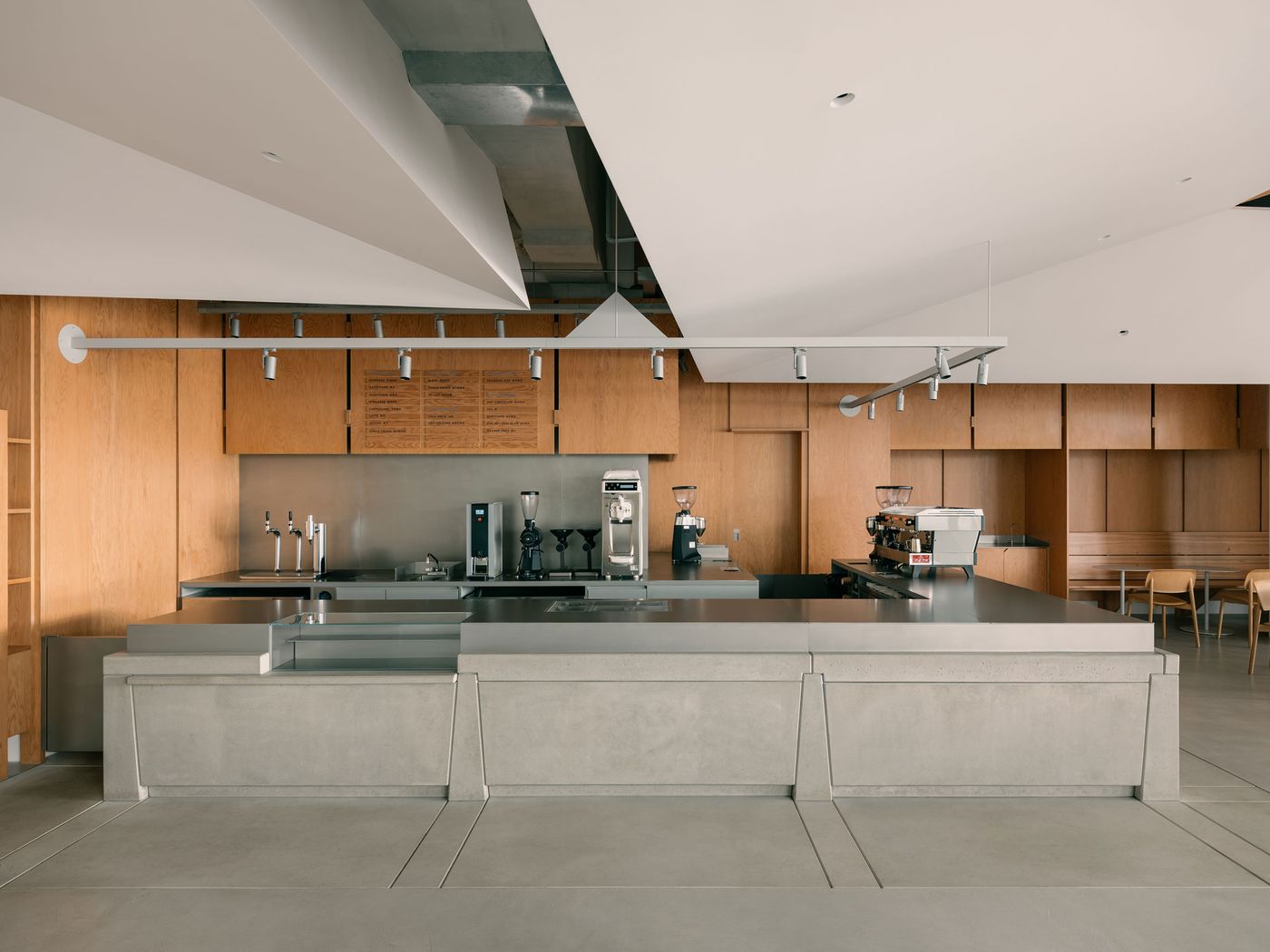
Photography by Wen Studio.
Once home to the Shanghai Cement Factory, the West Bund has transformed from a logistics and production hub into a cultural destination. Flanked by a historic shipyard and facing the Huangpu River, the site offers a cinematic backdrop that the designers have folded into the experience through a pair of faceted ceiling forms, described as “canvases.” Suspended above the concrete bar and seating area, these inclined planes resemble windswept awnings. Raised at the edges, they frame views of the riverbank while suggesting movement, as if catching a breeze from the water outside.
Supported by slanted timber pillars, the “canvases” divide the open-plan café into two subtly distinct seating zones. Their asymmetry creates a sense of gentle rhythm, drawing the eye upward while concealing mechanical systems. Strategically placed cutouts, which double as vents, reveal glimpses of the building’s original concrete structure as well as the ceiling’s wooden support structure.
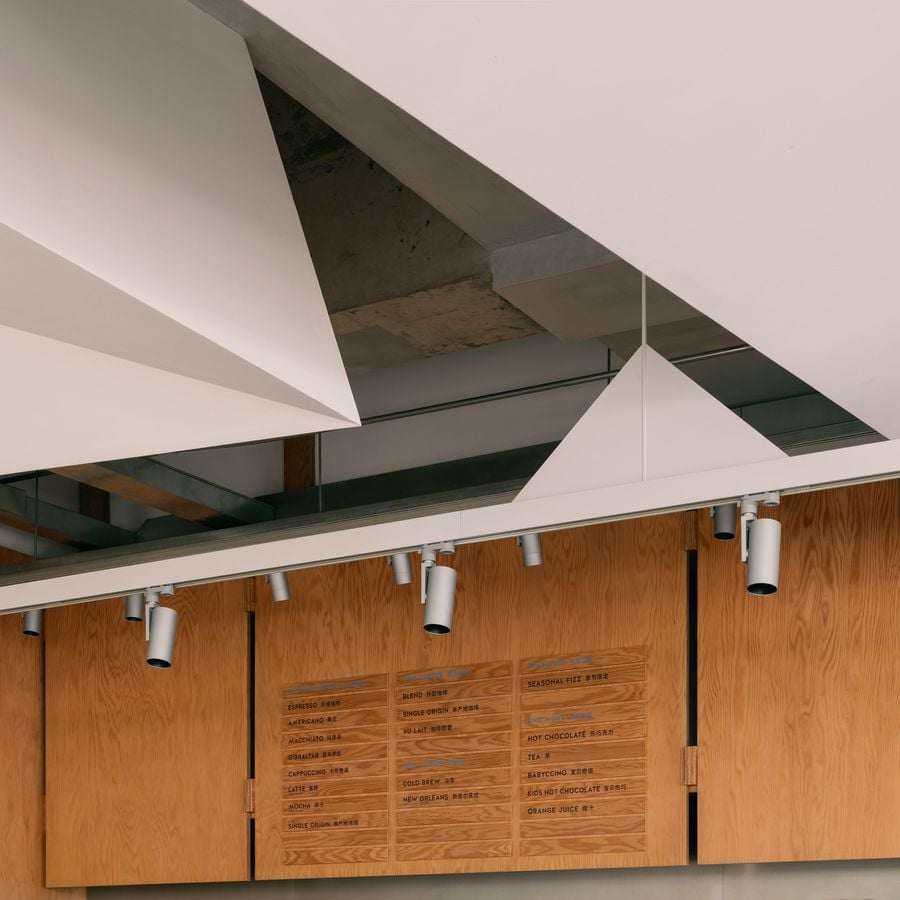
Photography by Wen Studio.
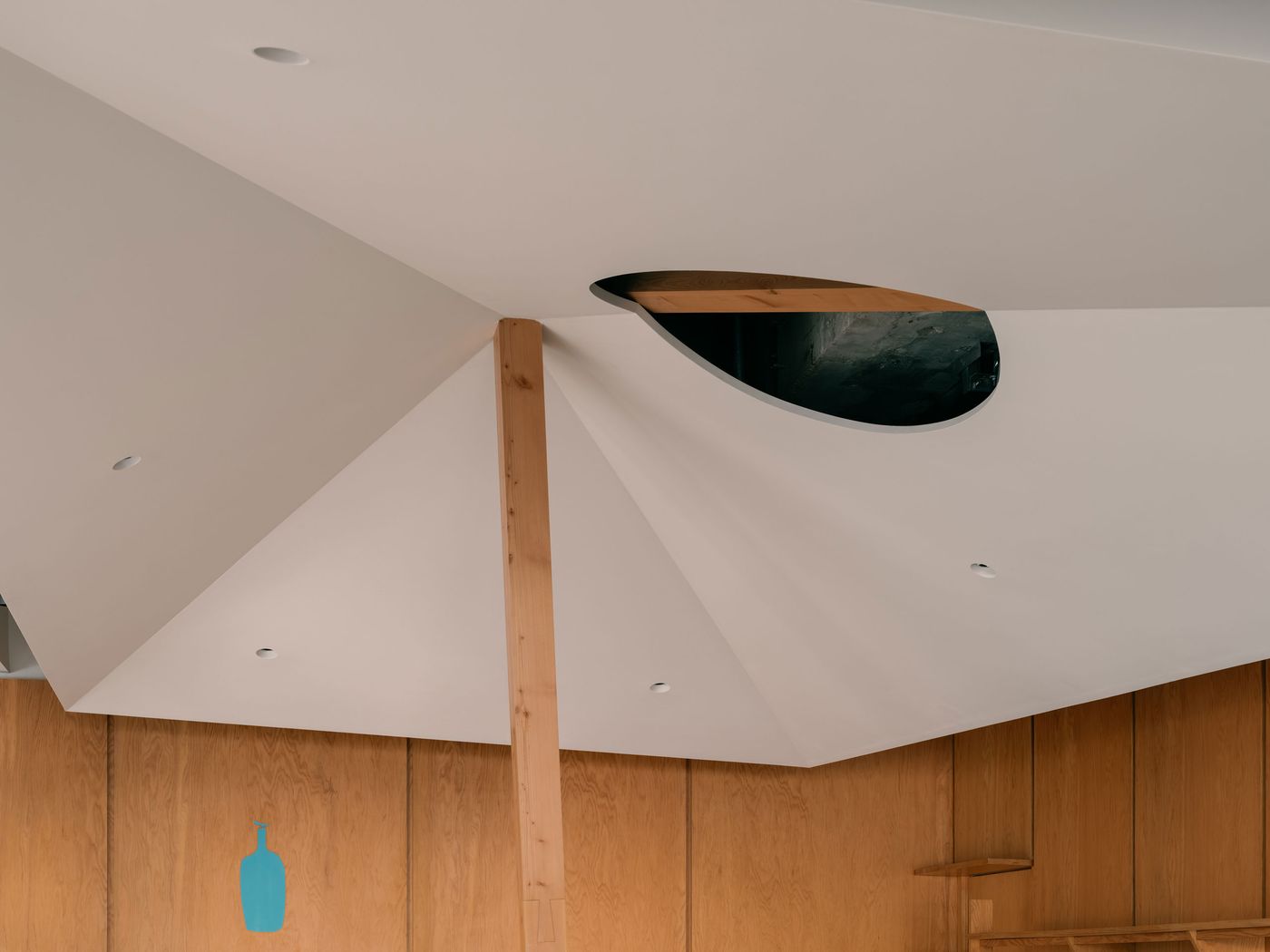
Photography by Wen Studio.
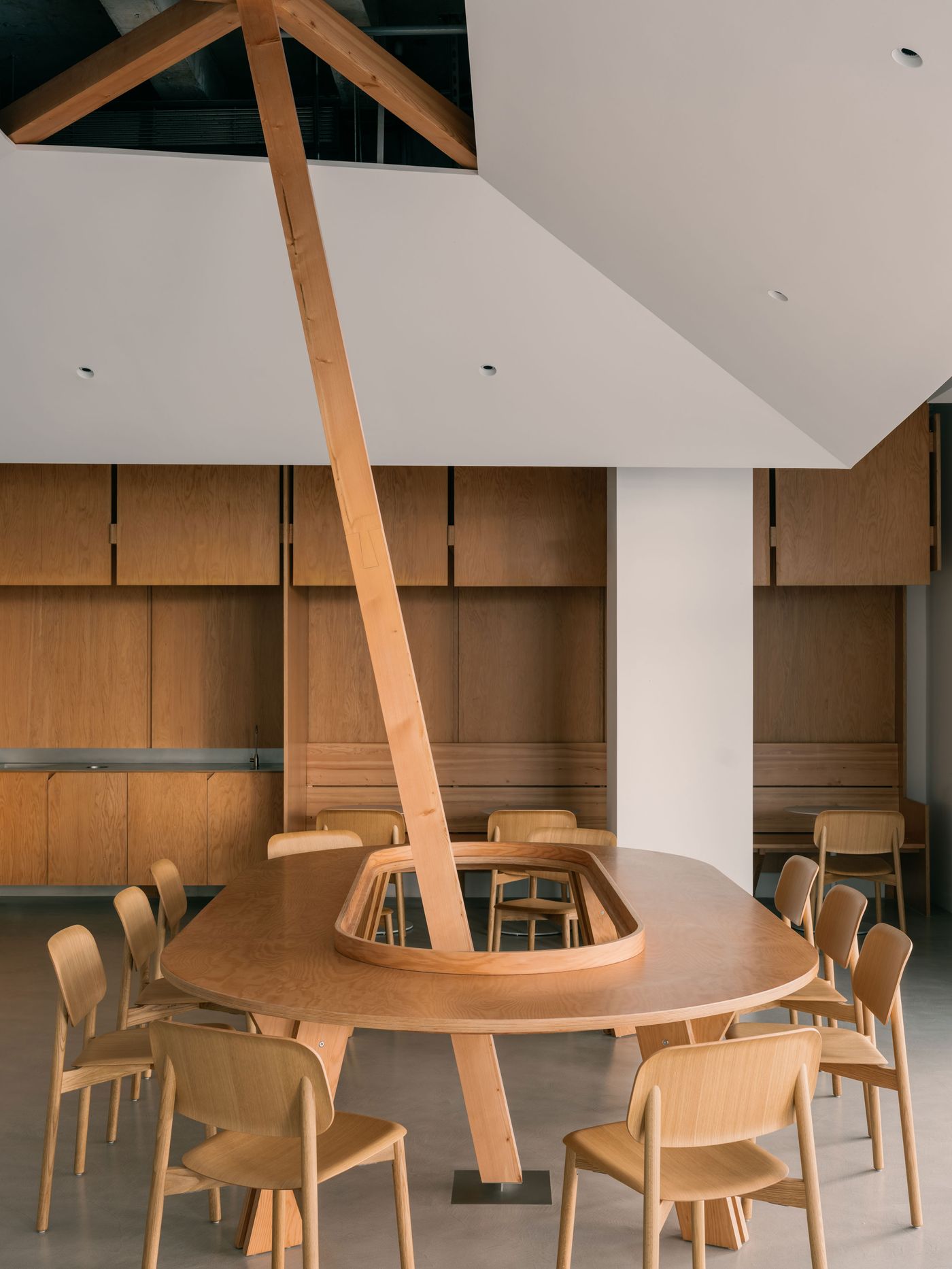
Photography by Wen Studio.
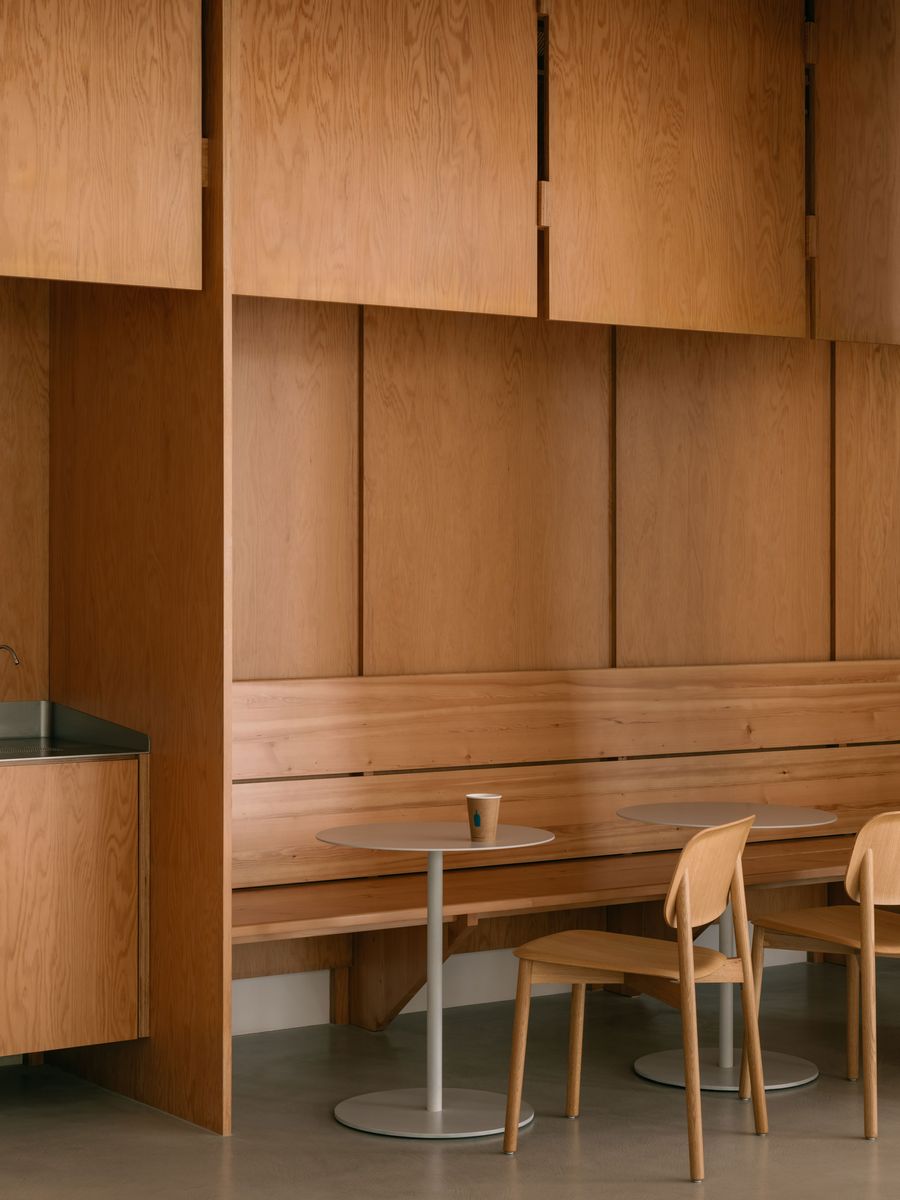
Photography by Wen Studio.
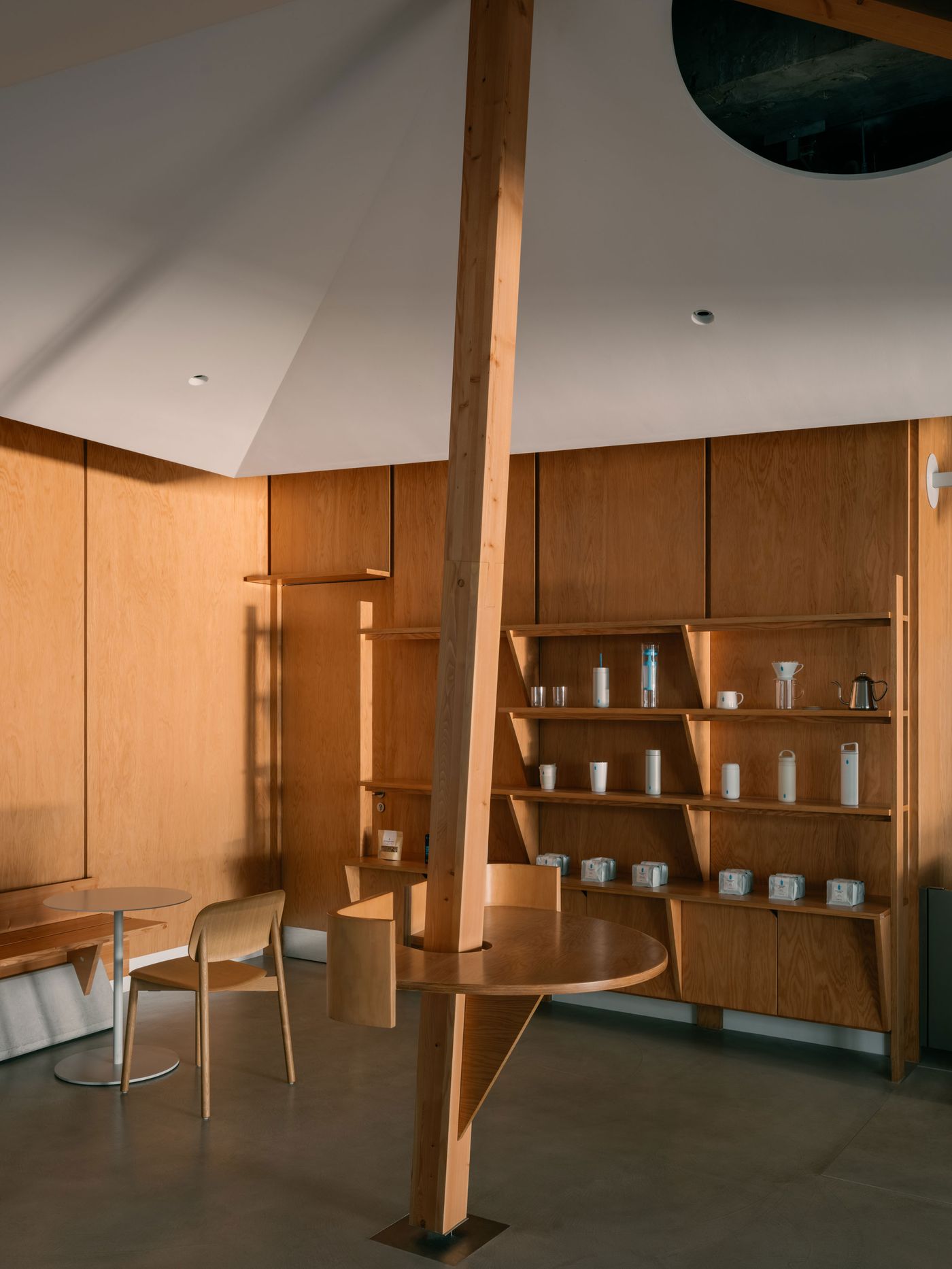
Photography by Wen Studio.
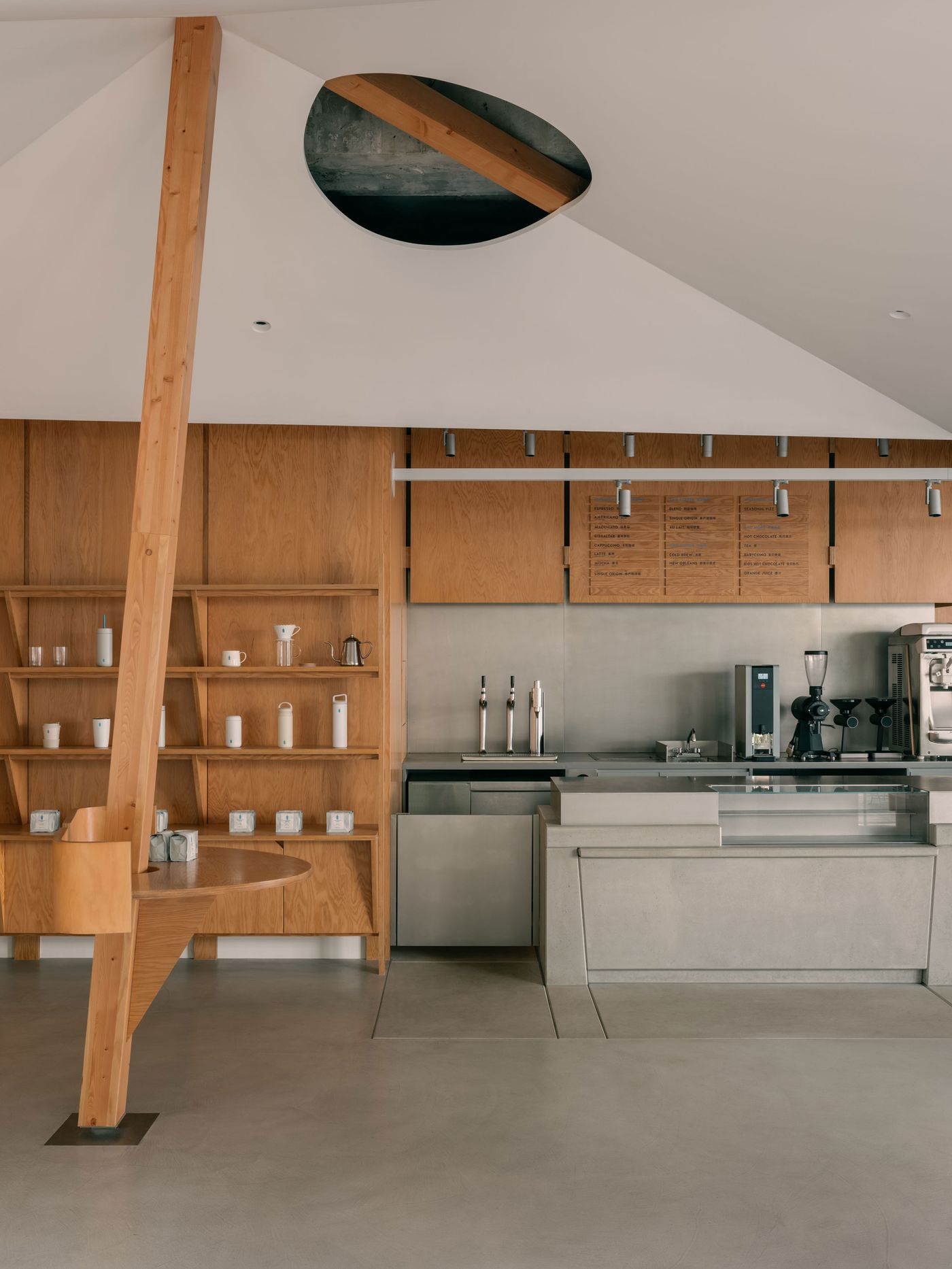
Photography by Wen Studio.
True to atelier tao+c’s approach, materials remain honest while compositions are left spare. A continuous wall of Douglas-fir panels along the café’s perimeter anchors the space. Functioning both as a partition and display, it accommodates shelving, entryways, and seating in one integrated gesture, its warm hue providing a tonal counterbalance to the cool greys of the concrete flooring and bar counter.
Constructed using prefabricated concrete modules as a nod to the site’s former life as one of Asia’s largest cement factories, the monolithic bar imbues the space with a sculptural monumentality. Topped with a sleek steel volume that adds a note of refinement, the counter’s cubic mass strikes a quiet dialogue with the faceted ceiling above.
As mentioned, the use of prefabricated concrete modules have also been used for the banquette seating lining the perimeter, their robust forms softened by pinewood seating surfaces and backrests. Outdoors, the same concrete modules reappear as stools and tables along the river-facing terrace, inviting patrons to linger with a cup of coffee while watching freighters drift along the Huangpu. This spatial continuity between the inside and out further deepens the dialogue between an industrial past and the crafted that form the very basis and heart of the project.
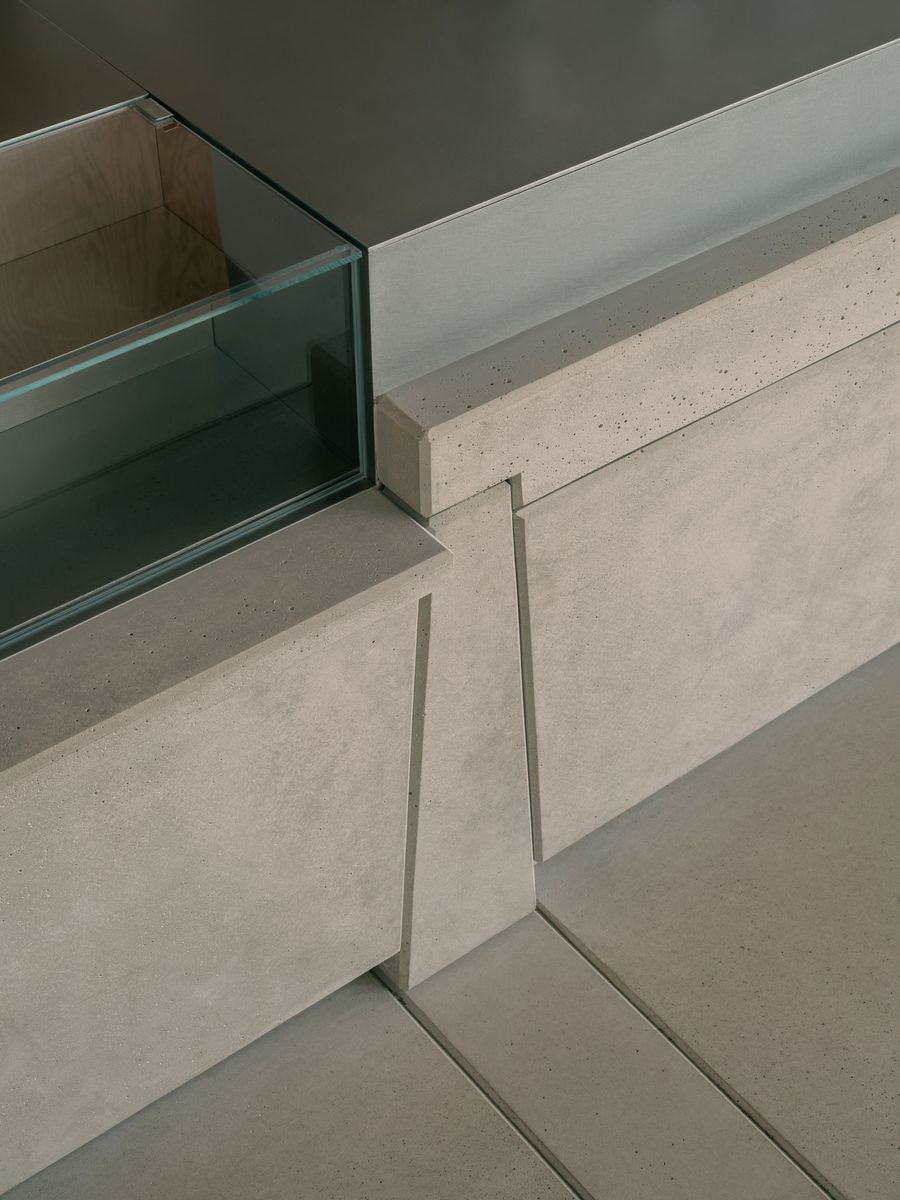
Photography by Wen Studio.
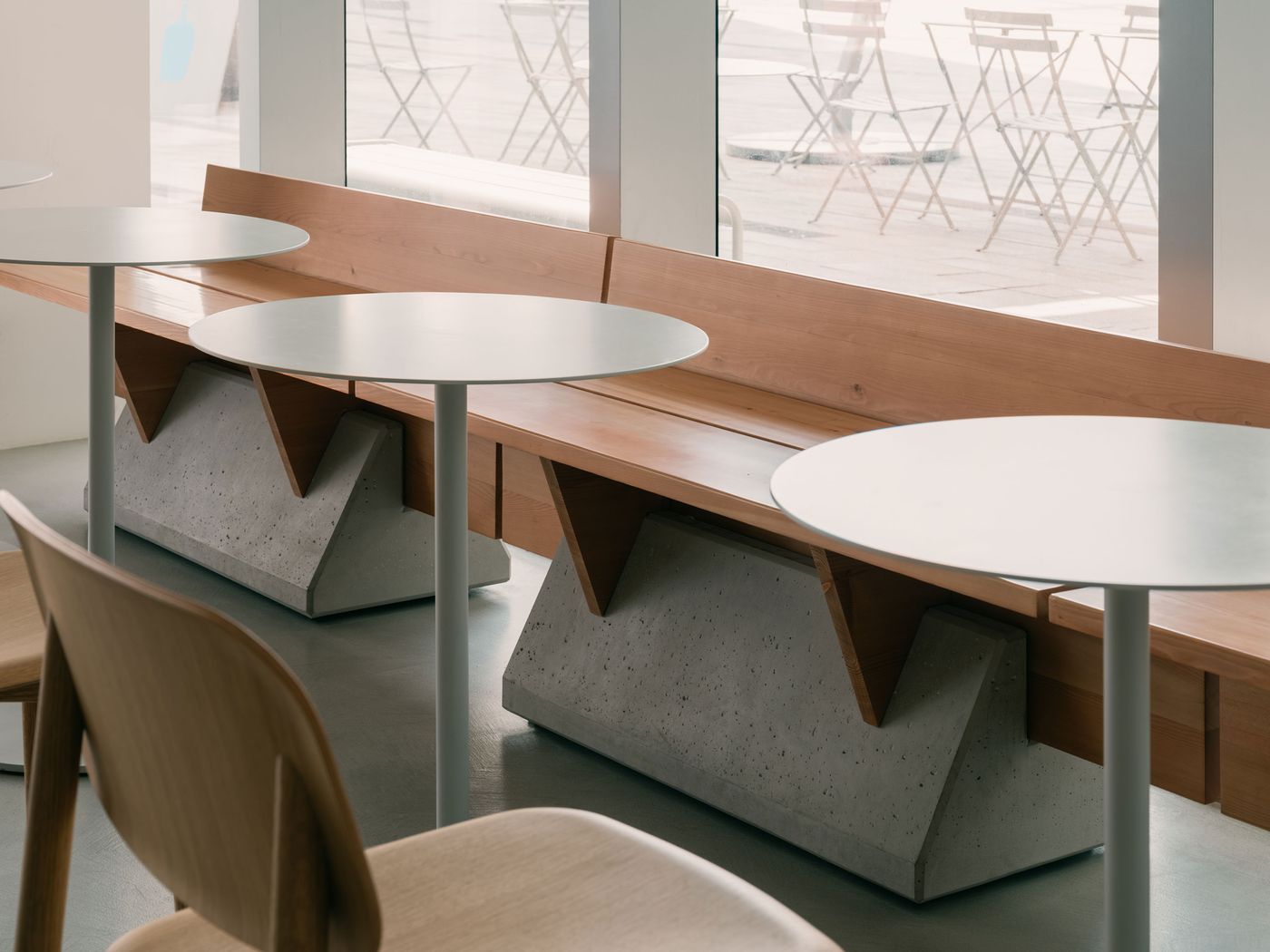
Photography by Wen Studio.
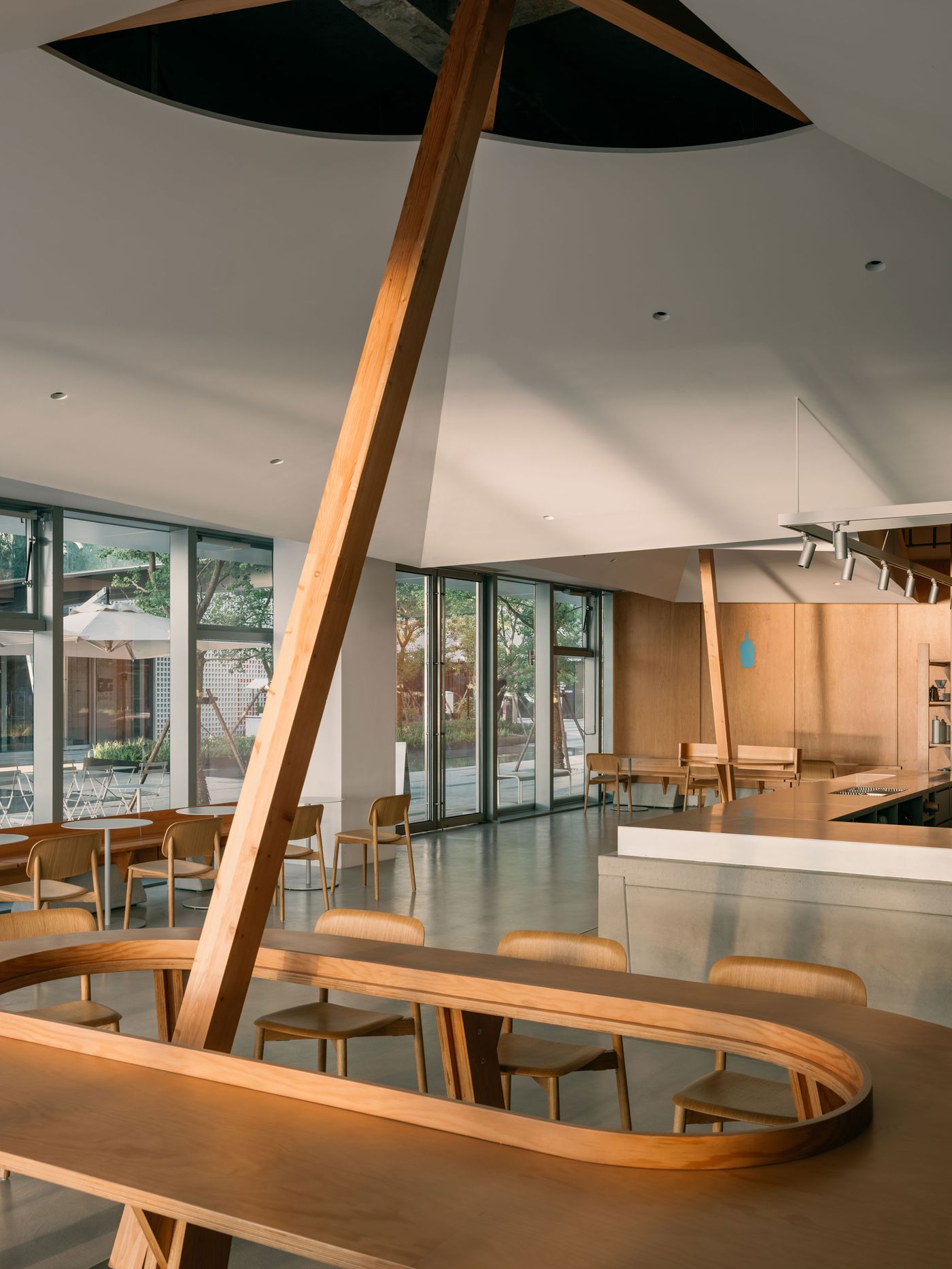
Photography by Wen Studio.
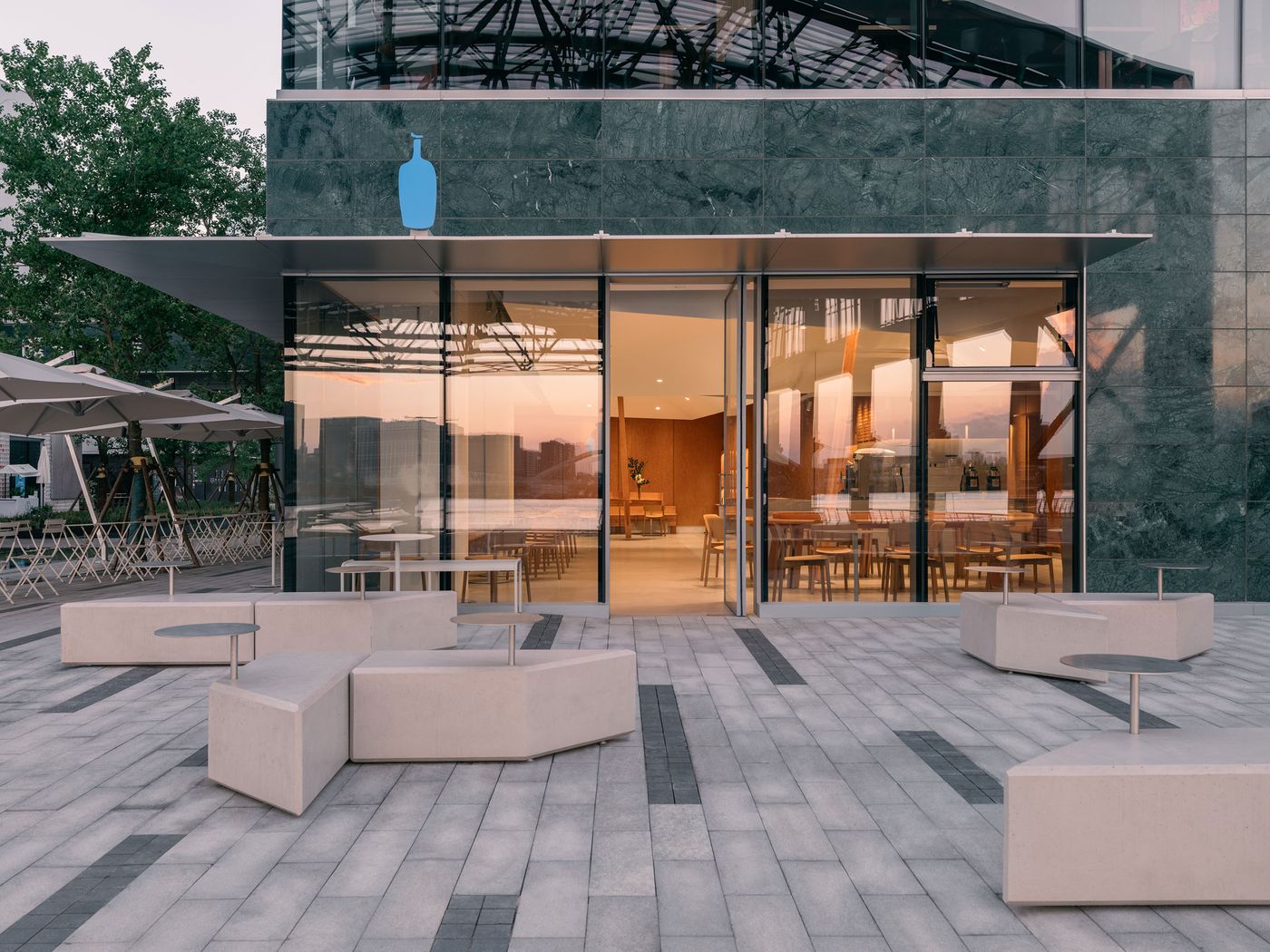
Photography by Wen Studio.
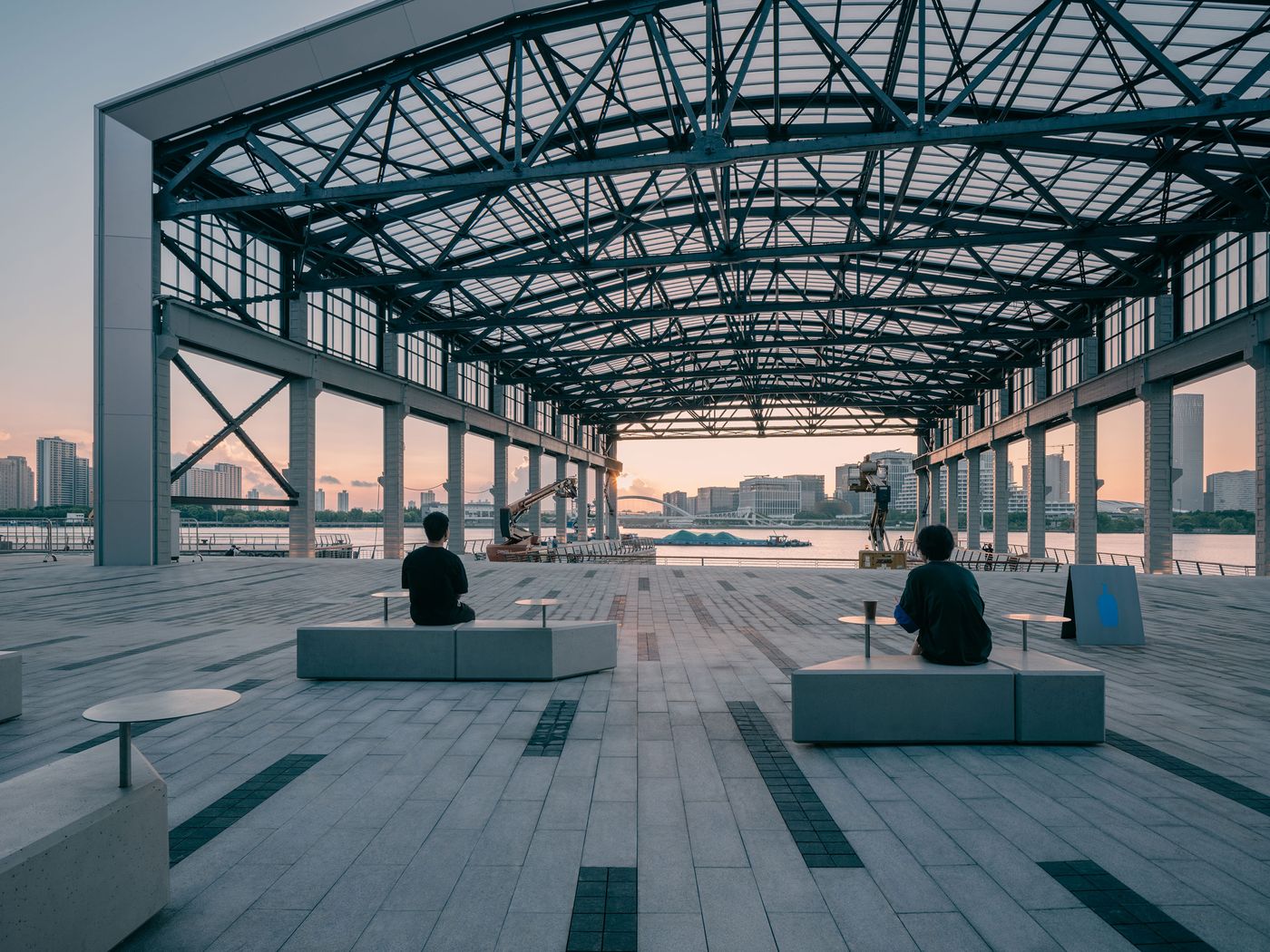
Photography by Wen Studio.